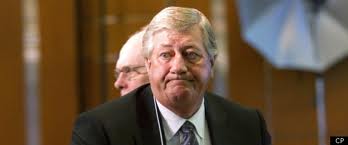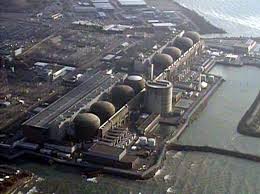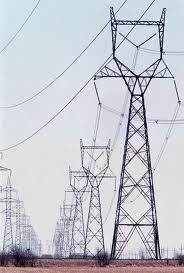By Ray Rivers
BURLINGTON, ON. It may have seemed like common sense to him. Premier Mike Harris, looking for his second mandate, decided to deregulate and privatize Ontario’s energy system. He was convinced electricity was not a natural monopoly and we’d be best served without an Ontario Hydro. But he couldn’t sell the public utility because it was carrying more debt on its books than it had assets. Cheap energy rates had been a key component of Ontario’s industrial strategy for decades. To keep the rates low Ontario Hydro financed its aggressive growth, including the costly nuclear plants, by running a tab with the province and letting the debt accumulate.

Former Ontario Premier Mike Harris made radical changes to the way the public pays for hydro. Were the changes good for the public interest? It has certainly been good for the people who run those companies.
By 1999, the utility was $38 billion in debt, over $3000 for every man, woman and child in the province. And about half of that was stranded, unsupported by assets. So, instead of privatizing Hydro, Harris broke up the utility into its components, leased out Bruce nuclear, and placed the debt into a separate account to be paid back via our energy bills. That debt has been costing us a billion dollars a year and we will be paying for at least another decade.
Harris didn’t really deregulate the energy sector either – he just broke the stranglehold which Ontario Hydro had held over electricity policy, leaving a vacuum in its wake. Economics 101 tells us that nothing is more efficient than a benevolent, well-regulated and well run monopoly, especially when there are economies of scale, as there are with electricity production. But Harris was attracted to the benefits inherent in the competitive model and was going to implement Adam Smith’s ‘invisible hand’, regardless of the cost. And, sure enough, costs rose dramatically as Harris and Ernie Eves, a Minister in the Harris government, experimented with a totally deregulated market, before finally settling on the hybrid energy supply system we have today. In fact cost increases were becoming so severe that Eves was forced to freeze rates in the run-up to the 2003 election.

Ontario has made heavy use of nuclear energy. Where we bury the waste from those plants has yet to be resolved.
Dalton McGuinty inherited this mixed bag. Like Harris before him, he was convinced that electricity wasn’t a natural monopoly. So rather than try to unscramble Harris’ energy egg, he resolved to make the private/public mix work. His first commitment, though, was to close down the dirty coal plants, which numerous studies had shown were a health risk. The coal plants were also Canada’s largest source of greenhouse gases – greater than the oil sands at that time. To replace them he contracted a combination of renewable and natural-gas energy sources. Renewable energy, which comprises about 2% of your energy bill, has taken a huge beating and ‘bad rap’ by the anti-McGuinty chattering classes.
So if it’s not the green energy then why are we paying so much more for our energy than we used to? Well there is that debt repayment charge which adds a little less than a cent per kWh. There is the ongoing reorganization of Ontario’s energy system, with too many agencies, too much duplication and probably too many consultants. Then there are the contracts to purchase power, which are essential in a partially deregulated market. Nobody is going to build a half-billion dollar energy plant without guaranteed market access. And if you want the private sector involved you have to make it attractive for them to participate – but maybe they’re too attractive.
Energy is different from other commodities. Demand for energy varies all the time, depending on weather, time of day, along with a number of other factors. Significant investment is required to meet peak demand and prevent system blackouts. That will involve significant downtime for some facilities in non-peak times. Private investment prefers as much certainty and constancy as they can get or they will need additional compensation to protect their shareholders from financial risk. For that reason the hybrid energy supply model, we have today, will always be more costly than a well run monopoly with the same capacity.
We’ll never know for sure if Harris was wrong to exercise his common sense and scramble the provincial energy giant, one of the largest utilities in the world, since it was a mess at the time. But we did learn one thing last week. As Ontario’s energy minister, Bob Chiarelli, unveiled his long term energy plan, it became painfully clear that the days of cheap energy are long gone in Ontario. It almost makes you wish we still had the old Ontario Hydro back again, at least until you consider the recent spate of monetary excesses by the management of Ontario Power Generation – oh, and that huge debt.
 Ray Rivers writes weekly on both federal and provincial politics, applying his more than 25 years as a federal bureaucrat to his thinking. Rivers was a candidate for provincial office in Burlington where he ran against Cam Jackson in 1995, the year Mike Harris and the Common Sense Revolution swept the province. He developed the current policy process for the Ontario Liberal Party.
Ray Rivers writes weekly on both federal and provincial politics, applying his more than 25 years as a federal bureaucrat to his thinking. Rivers was a candidate for provincial office in Burlington where he ran against Cam Jackson in 1995, the year Mike Harris and the Common Sense Revolution swept the province. He developed the current policy process for the Ontario Liberal Party.
Background:
Rivers article August 29, 2013
Competitive vs Hybrid Discussion
Ontario Power Generation Excesses






















Great analysis!